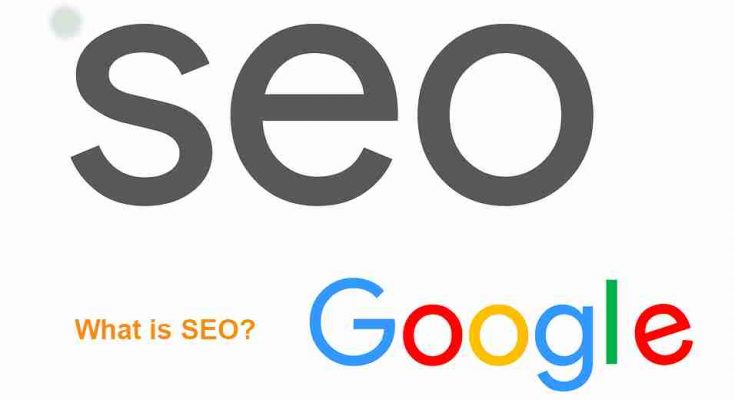How to Do SEO Optimization for Your Website?
Do you come from Google ranking your website higher? Do you spend hours searching and not listing your website? Well, let me give you a brief overview of how to optimize your website for search engine optimization.
I’m looking at those features today and what kind of search engines you should follow to make your website effective.
You should contact the reader of this article, no tool notes can be arranged here, and also if you are familiar with it, keep in mind that these changes will be your son’s first step to the number one position on Google.
Listed Blogging, Blog Comments, Provide Articles, Web 2.0 Websites, and Social Media Websites.

Search Engine Optimize Your Website
- High-Quality Content
If you plan to copy and paste content, don’t hesitate to start a blog. You will never find a place in search engines like this because Google despises duplicate content.
A few years ago we saw that article directory could take huge hits because they had so much fake content and the same truth still exists today.
I have heard of sites that have only enhanced their site through their content.
While this is difficult if you are relevant and up to date when providing relevant information,
it holds true that some of the blogs I have read have amazing content that is regularly shared across the Internet.
This is the only goal of every blogger!
- On-Page Optimization
Your specific pages should be targeted for ranking for specific keywords. Unfortunately,
if all of your pages are optimized for their respective keywords, you’ll struggle to get it.
If you know all about on-page search engine optimization you can skip this section, but I will take a few key elements.
Title tags – If your title tags do not contain your keyword, you will probably never rank.
Make sure your pages have proper titles.
An alt tag – If you are going to use images, your keyword should be left in the good tag.
Unfortunately, Google can’t read your image and know what it’s displaying so you should fill in all the well tags.
Header Tag – The title of your article should be in an H1 or H2 title tag.
After that, I usually use H3 titles in my articles section and I keep them related to the main topics of my article.
Bold, M tags – Your keyword should be included in both bold and strong tags at least once per article. This will help Google learn more about the main focus of the article.
Keyword Density – This is an interesting topic but I recommend keeping the keyword density below 3%.
Remember, there are probably thousands of articles on the same topic so differentiate yourself with better content rather than with keyword stuffing.
Links to your article – this has become very important to me. I believe that you should link to other websites as you mentioned in your article.
For example, I mentioned websites later in this article so I linked them to them. Instead of thinking about keeping the juice of all your links, focus on providing quality content and other resources to your readers.
This doesn’t mean that your competitors should start linking to pages even if they don’t link to you or if their content isn’t exactly as good.
Meta Descriptions and Keywords – By most accounts, Google no longer uses meta keywords because people tried to exploit them.
However, other search engines consider meta keywords so I recommend you still use them.
As for your meta description, you need to keep it below 160 characters and focus your attention on writing quality descriptions for each article in your post.
Make sure you have the keyword in the description at least once and try to use it in the middle of a sentence.
For example, I could say for this article, “You can optimize your website by focusing on the engine.”
And it will be natural to Google and people will be more likely to click through it.
Hyperlink – Your keyword should be somewhere in your link.
With WordPress, you can edit every single link and create your settings to put the post title to the hyperlink.
For example www.onnetindiablog.com/search-engine-optimize-your-website.
Authorship – Claim authorship of your blog with your Google+ account.
This will eventually be a big part of the ranking because better writers will probably get higher rankings.
I believe that Google’s common goal is to have a ranking of blog writers so that they can determine which content is better relevant and which content is poorly written.
But for your readers, you have to write long and detailed articles.
- Good Navigation and Must-Have Pages
There are certain pages that search engines will actually search for.
If you miss them, your website will not be viewed as ‘complete’ because they are vital pages.
You can easily create some of these websites in minutes so I suggest you do it.
Browse – Create a browse page now and always link to things on your website. Classifying your own website and sorting it for both readers and search engine bots
About – Explain yourself, your interests, and your background in your chosen niche.
The more you can add yourself to your blog the better.
People want to see that there is someone special in a certain niche here and you should make it clear.

Communication – You’re about to get other bloggers and readers who want to connect with you.
If they have a special offer for you or they just have a question, you should have a contact page.
When people expect to contact you, you should also make sure that you explain it on your contact page.
Lastly, make sure that you have actually checked your email, or else your contact page is there to show.
Privacy Policy – Google searches for this and it’s important to keep it. I also usually create a denial page but this is absolutely not necessary.
Sitemap – Download the Google XML Sitemaps plugin and then link to your footer or your sitemap in your sidebar. Either way, your own sitemap should link to each page.
- Engagement and Bounce Rate
Bounce rates can have a devastating effect on your website and its rankings.
I once owned a website that started to rank high on Google. I was looking for other sources of traffic so I started submitting pages to StumbleUpon.
That’s why you need to be careful about your bounce rate.
The first thing I will do is avoid negatively affecting your own bounce rate.
For example, if you constantly go to your homepage, check it, and then click on another website, you will actually lose your own bounce rate.
Instead, make sure you’re almost always clicking on different pages when testing your website.
If you get more than 300 unique visitors every day, it probably won’t make any sense.
The second thing is to try to get people involved.
If you have a website that can appeal to members, create a signup page, and try to entice and motivate your members.
If you have a lot of search engine traffic, make sure you have a well-organized website and links to your articles.
The main thing you need to look at is to expect visitors on one page and visit your website instead of leaving.
Another aspect of this can be an ugly design, as I don’t believe in design websites stuck in the 1990s.
- Page Loading Times
The next step will help your website loading times tremendously and that is important for Google rankings.
The next plugin I would use is called W3 Total Cache and when working together with WP Super Cache, it will help your loading times rival authority websites.
Another important factor is the hosting you are using.
You should not use any free host as you will probably experience downtime and slow loading time.
If you are serious about increasing your website and ranking it in search engines then you need good hosting.
Takeaways from SEO Your Website
You can use Google News to update your industry or buy unique articles from freelance writers.
Just make sure all your articles have passed to CopyScape.
You need to place your keyword in a specific place so that search engine bots can find and rank your articles.
If you don’t properly optimize your articles, you’ll find yourself out of the top 10 on the search engine results page.
Make sure you have the About, Contact, Privacy Policy, and Sitemap page.
It helps to have a browse page to keep all your articles and sections organized.
The engagement has recently become very important, which is why responsive web design has become so popular.
Concentrate on keeping current visitors engaged and people browsing through your website.
Use a number of WordPress plugins to increase your page loading time. You can clear some extra code or try to make sure all your CSS is in a stylesheet.
Make sure you also use a reliable paid hosting service.



